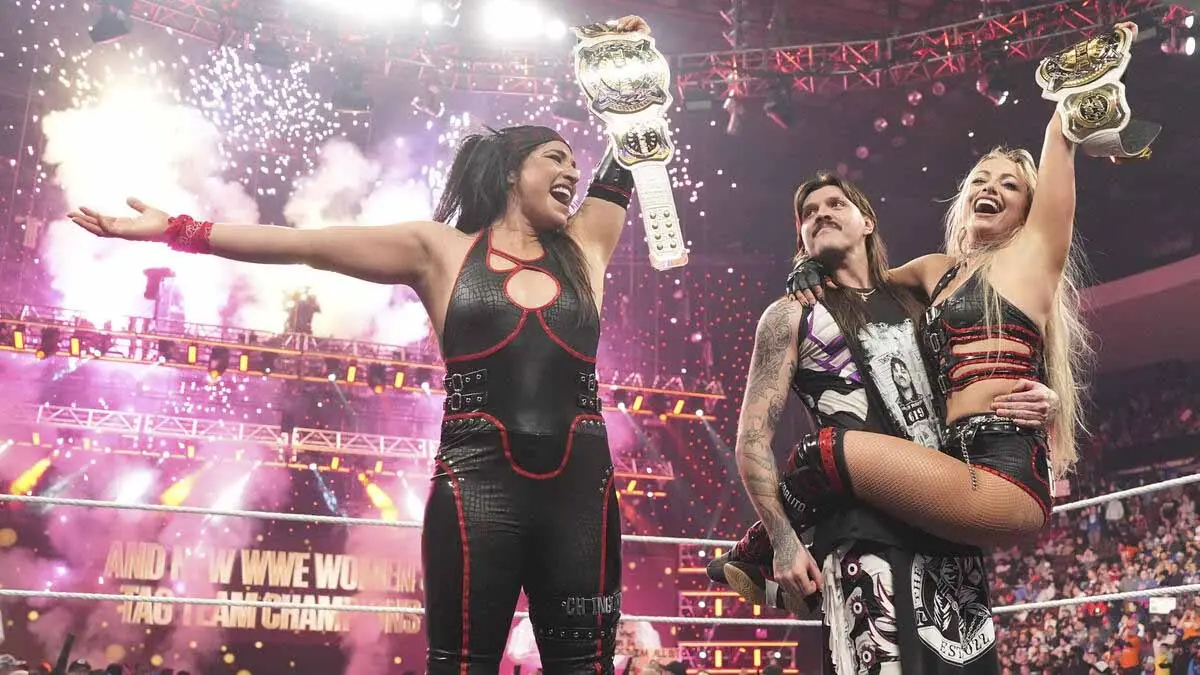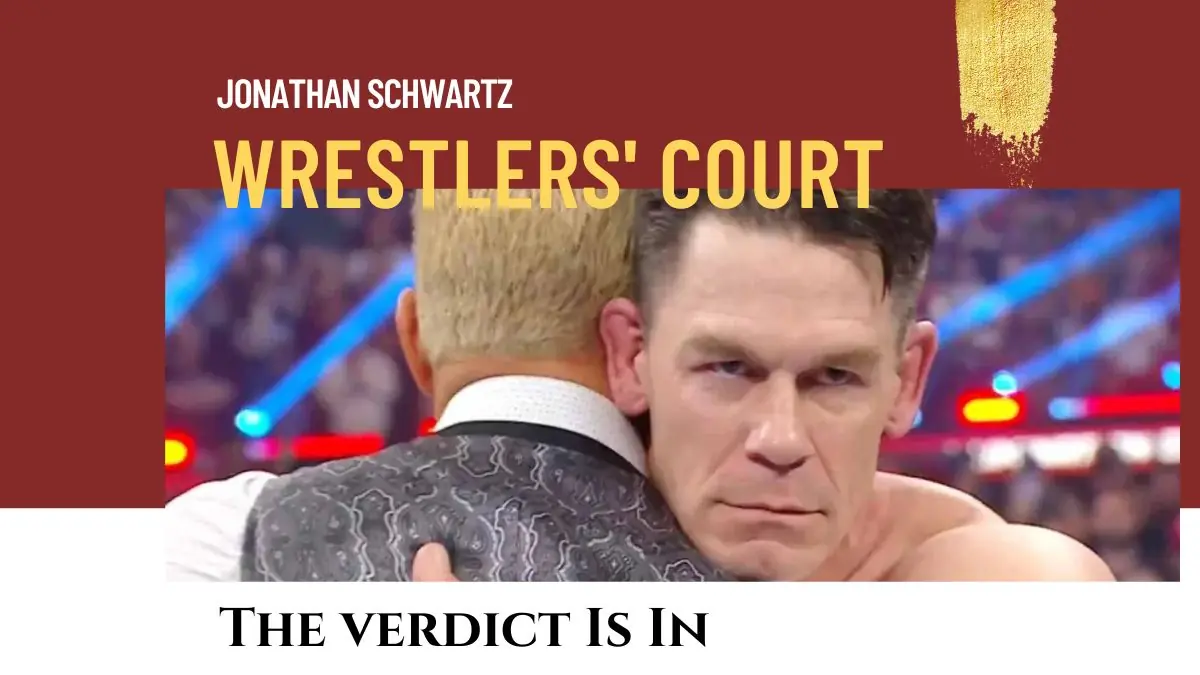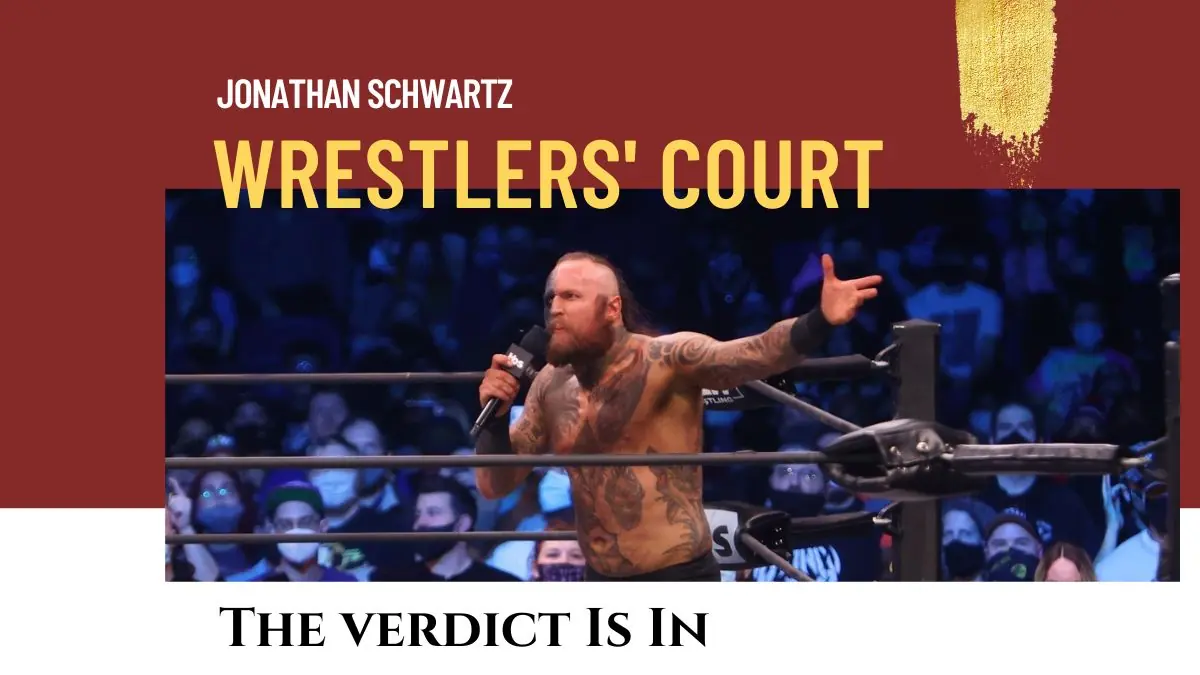On Sunday, April 3 WWE presented the second of its two-night WrestleMania extravaganza.
Most fans no doubt focused on the main event, in which Universal Champion Roman Reigns pinned WWE Champ Brock Lesnar to unify the E’s two most important titles and cement his reputation as the biggest star of the current era. Others noted Edge’s shift to a darker character in his defeat of AJ Styles, Pat McAfee turning in another surprisingly strong performance in a victory over Austin Theory, or Vince McMahon blundering around the ring in his own win over McAfee or his “worst stunner ever” at the hands of Steve Austin.
But buried in the second match of the evening was one of the more interesting results. Bobby Lashley, making a return from injury on a week’s notice and without his manager MVP (more on that later) defeated the previously unbeaten Nigerian giant Omos in six and a half minutes.
Of course, Omos got his heat back the next night on Raw, with a scorned MVP turning on Lashley and taking Omos on as his new protégé (which will only help Omos as a villain; as imposing as he is physically, his promos need work). But still, Lashley beat the big man like Ultimate Warrior beat an end-of career Andre the Giant during his ascendency. In this case the guy with more upside lost and lost badly.

And this is the issue. WWE (and before it, WWF and before that WWWF) used to be known as a ‘big man’s territory’, where supersized heels would be cultivated, fed a series of talents on their way up the crowd, paired with a manager to guarantee heat on their way to a series against a dominant babyface champion. From there, the results would be predictable unless you were a fan watching in real time-a series of main events, the first two inconclusive or the heel winning by disqualification or count out or bloodshed (but not taking the title), followed by a triumph by Bruno or Pedro or Backlund or Hogan or Savage or Warrior or Hart (the formula started to break down with the rise of the Attitude Era).
This formula worked for wrestlers as varied as Gorilla Monsoon, Killer Kowalski, Don Leo Jonathan, Blackjack Mulligan, Stan Hansen and the Spoiler, through John Studd, King Kong Bundy and Andre the Giant; and even the Undertaker, Diesel, Sycho Sid Justice and Earthquake.
While the giants themselves had varying levels of ability, all were booked in a way that hid their limitations; where they had trouble expressing themselves, a roster of established antagonists held the microphone on their behalf. Favorable camera angles or soap boxes made these men look like even greater Goliaths, as did being paired with smaller opponents in their first televised matches. Where stamina or in-ring limitations became an issue it was possible to conceal them through tag team or six-man matches, or battle royals (the latter being Andre the Giant’s specialty, which mostly required him to stand still and refuse to budge when other wrestlers attempted to toss him). The sheer shock value of their size helped build a house but was generally not a long-term proposition. In the days before WCW fell, the territory system helped move these attractions from place to place before they wore out their welcome. The (then) WWWF eventually became Andre’s booking agent for other territories, so it could cycle him in as an effective, occasional attraction (most often in the last match of the night, usually a six-man match where he would just have to clean house at the end).
The idea that a giant would so readily take a fall, especially to a much smaller opponent would just strain credibility, and yet, as the wrestlers have gotten bigger and their skill sets smaller — in part due to the limited number of platforms for them to learn their craft — we see a lot more results like Omos versus Lashley, in which giants routinely lay down for smaller but more skilled opponents.

By the early 1990s Andre himself was used to get the Ultimate Warrior over in a loop of two-minute house-show matches. Attempts to build a new giant terror with Giant Gonzales failed outright. No part of that character worked, though, from a second-rate manager to a silly costume, to his lack of English skills and dismal performances, Gonzales never had a shot… but other Giants since then have underwhelmed for less clear reasons. Paul Wight, who was initially billed as Andre’s son in WCW, enjoyed some success wherever he went, winning world championships in WCW and WWE (and WWE’s bastardized version of ECW), but prolonged losing streaks and blink-if-you-miss-it turns from heel to face and back again kept him from being a serious long-term threat. The Great Khali had a brief run with WWE’s version of the World Championship, but his own in-ring and on-mic limitations soon relegated him to a comedic role. WWE introduced a whole superheavyweight stable in the Attitude Era –they became the Parade of Human Oddities under Don Callis’ Jackal character… only to become the world’s biggest Enhancement Talent/Juggalos.

And since then, the list has grown. Omos’ own winning streak, now devalued with his quick loss to Lashley, included would-be monsters like Commander Azeez (himself billed at 6’10”) and T-Bar (who is 6’7” and is a very capable performer). On Smackdown Shanky, Jinder Mahal’s alleged enforcer, stands 7’0” but is routinely pinned by smaller, lesser-pushed stars. There may be perfectly valid reasons for these decisions, including lack of experience or ability, but the shift away from big men is only emphasized when you consider how on average the roster has shrunk in size since Hulk Hogan’s heyday. Today’s performers may be more athletic, in some cases are better grapplers and are rarely more charismatic than their predecessors, but at some point as fans we’re going to see a show and demand spectacle.
Some of this could be part of the wrestling business cannibalizing itself; as competitive TV time demands more compelling matches, the old ‘squash match’ that would pit a featured wrestler against a very average looking opponent (and result in said average opponent getting thrashed) is a thing of the past. With a roster full of supermen, half are bound to lose, and size matters less.
The giant who runs roughshod over his competition is a trope; his size comes with presumed feats of strength; whole move sets are designed around the idea that he picks his opponents up and plants them in the canvas from a dizzying height. There’s a reason so many execute chokeslams or power bombs (the same way really heavy wrestlers rely on splashes — see Kamala, Earthquake, Yokozuna, One Man Gang or Bam Bam Bigelow, for starters). The story these giants tell best is how our greatest heroes defy the odds; David versus Goliath matches have long been a critical part of that narrative. But David’s victory over Goliath is meaningless if Goliath rolls an ankle and can’t make it to the battlefield.
Omos’ defeat may stand as an exception to this rule; his WrestleMania loss is being used to advance Lashley’s story by turning him face, and his own by aligning him with one of WWE’s few effective managers. But it’s safe to say that the day of the Wrestling Giant has passed. It used to take a great little man to beat a good big man; nowadays? Not so much.
TOP PHOTO: Omos versus Bobby Lashley at WrestleMania 38. WWE Photo
RELATED LINK




